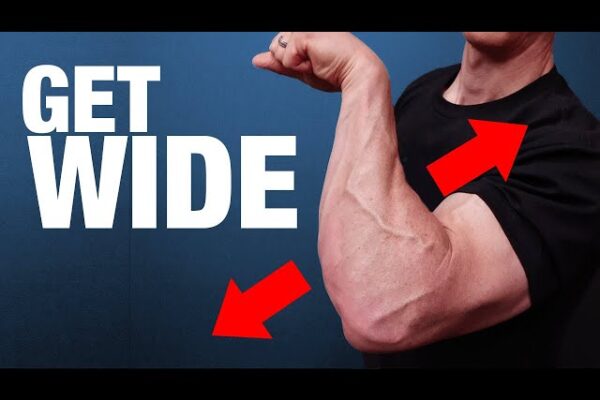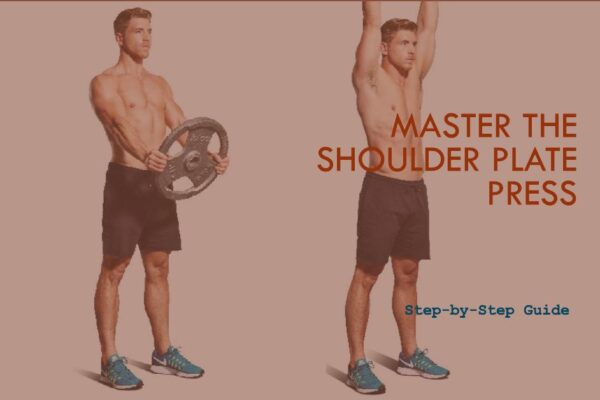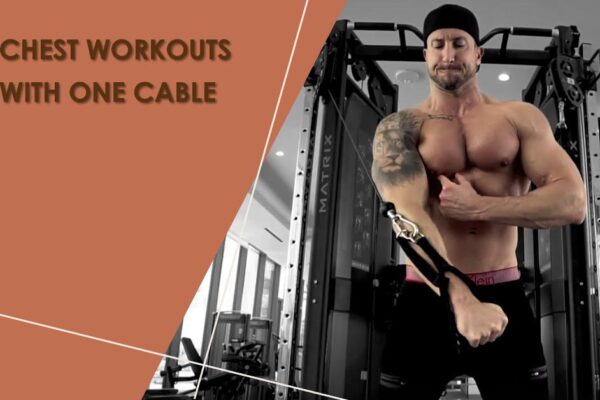When it comes to fitness and everyday activities, forearm strength plays a crucial role. Whether you’re lifting weights, carrying groceries, or performing manual labor, strong forearms can enhance your performance and prevent injuries.
One exercise that specifically targets forearm muscles is the Barbell Reverse Wrist Curl.
What is Barbell Reverse Wrist Curl
Barbell Reverse Wrist Curl is the exercise that specifically targets the extensor muscles in your forearms, which are responsible for extending your wrists and opening your hand.
Incorporating Barbell Reverse Wrist Curls into your workout routine can help you maximize your forearm strength and achieve impressive results.

Muscles Worked in Barbell Reverse Wrist Curls
Targeted
The primary muscle groups targeted in Reverse Curls are:
- Extensor carpi radialis brevis
- Extensor carpi radialis longus
- Extensor carpi ulnaris
Activation of these muscles help in stabilizing the wrist and contributes to the overall effectiveness of the exercise.

Benefits of Benefits of Barbell Reverse Wrist Curl
Barbell Reverse Wrist Curl offers a range of benefits that can greatly improve your forearm strength and grip. Here are the key advantages of incorporating this exercise into your routine
- Enhanced grip strength and forearm endurance: Barbell Reverse Wrist Curls improve grip strength and endurance, aiding in activities that require a strong grip.
- Well-rounded forearm muscle development for improved aesthetics: These curls help develop well-rounded forearm muscles, enhancing the overall appearance of the arms.
- Support for functional movements and everyday activities: Strong forearms from this exercise provide support and stability for everyday tasks and functional movements.
- Improved sports performance through increased forearm strength: Reverse Wrist Curls contribute to better sports performance by boosting forearm strength and power.
- Boosted overall upper body strength and stability: Engaging in this exercise improves overall upper body strength and stability due to the involvement of forearm muscles.
- Injury prevention and rehabilitation support: These curls help prevent injuries and support rehabilitation by strengthening the forearm muscles and promoting joint stability.
By regularly incorporating the Reverse Wrist Curl into your workouts, you can experience these benefits and take your forearm strength and grip to new heights.
Step-by-step instructions
- Start by standing with your feet shoulder-width apart and holding a barbell with an overhand grip.
- Allow your arms to fully extend in front of you, keeping a slight bend in your elbows.
- Slowly curl the barbell upwards using your wrist extensor muscles, bringing it as close to your forearms as possible.
- Pause at the top of the movement, squeezing your forearms.
- Slowly lower the barbell back to the starting position in a controlled manner.
- Repeat for the desired number of repetitions.
B. Explaining the correct grip and hand positioning
Ensure that your grip on the barbell is firm and secure. Place your hands shoulder-width apart on the barbell, palms facing downwards. Maintain a neutral wrist position throughout the exercise to engage the extensor muscles effectively.
C. Emphasizing the importance of maintaining proper form and alignment
- During Barbell Reverse Wrist Curls, it is crucial to maintain proper form and alignment to maximize effectiveness and minimize the risk of injury.
- Keep your elbows stationary throughout the movement, focusing the effort on your forearms.
- Avoid using momentum or excessive swinging of the barbell. Remember to breathe naturally and maintain a stable and balanced posture throughout the exercise.
Tips to Maximize Your Barbell Reverse Wrist Curl Results
To get the most out of your Behind the Back Barbell Wrist Curl while ensuring safety, consider these tips:
Supplementary exercises
Include exercises such as forearm curls, wrist roller, and grip strengtheners to target the forearms from different angles and promote overall forearm development.
Nutrition and hydration tips
Consume a balanced diet rich in protein, carbohydrates, and healthy fats to support muscle recovery and growth. Stay hydrated throughout the day to optimize performance and aid in muscle function.
Suggested training programs
Incorporate Wrist Curls into your existing upper body or arm training routine. Aim for 2-3 sessions per week, allowing adequate rest days between workouts to facilitate muscle repair and growth.
Variations for Wrist Curls
Dumbbell Reverse Wrist Curls
- Proper Form and Execution:
- Hold a dumbbell in each hand with an overhand grip, palms facing downwards.
- Rest your forearms on a bench or your thighs, allowing your wrists to extend beyond the edge.
- Curl the dumbbells upward using your wrist extensors, focusing on maintaining control and a slow, steady pace.
- Pause briefly at the top of the movement and then lower the dumbbells back down with control.
- Advantages:
- Dumbbell reverse wrist curls provide the flexibility to target each forearm independently, helping to address muscle imbalances.
- The exercise also allows for a greater range of motion, enabling a more thorough engagement of the wrist extensor muscles.
By following these tips, you can optimize your results and maintain a safe workout routine.
Incorporating these variations into your forearm training routine can add variety, challenge your muscles in different ways, and help you progress towards stronger and more resilient forearms.
Remember to use proper form and start with appropriate weights for your fitness level.
Common Mistakes to Avoid
To get the most out of your Barbell Reverse Wrist Curl and prevent potential injuries, it’s essential to avoid these common mistakes
A. Common Errors in Form and Technique
- Rounding the back or hunching the shoulders during Barbell Reverse Wrist Curls
- Using momentum or swinging the barbell to lift the weight.
- Allowing the elbows to move or lift during the exercise.
B. Potential Risks and Injuries Associated with Improper Execution
- Improper wrist positioning can diminish the effectiveness of the exercise and increase the risk of discomfort or injury. Make sure your wrists are in a neutral position throughout the movement, avoiding excessive flexion or extension.
C. Corrective Measures and Tips for Avoiding These Mistake
- Maintain proper posture by keeping the back straight, shoulders back, and chest lifted throughout the exercise.
- Focus on controlled movements, avoiding swinging or using momentum to lift the weight.
- Keep the elbows stationary and fully engage the forearm muscles during the entire range of motion.
By addressing these common mistakes, individuals can minimize the risk of injuries and optimize the effectiveness of their Barbell Reverse Wrist Curls.
Best Practices for Optimal Results
Warm-up exercises
Prior to intense training, incorporate wrist rotations, forearm stretches, and light wrist curls to warm up the forearms and prevent injuries.
Recommended sets, reps, and weights
Beginners can start with 2-3 sets of 10-12 reps using a comfortable weight. Intermediate and advanced individuals can gradually increase the intensity by adding sets, increasing reps, or using heavier weights.
Rest and recovery guidelines
Allow 48-72 hours of rest between forearm training sessions to promote muscle repair and growth. Listen to your body and adjust the frequency based on individual recovery ability.
Progressive overload techniques
Continuously challenge your forearms by progressively increasing the weight, reps, or sets over time. This gradual overload stimulates muscle adaptation and helps achieve continuous improvement.
Frequent Question Answers
By addressing the following frequently asked questions, we hope to provide clarity and guidance on incorporating the Wrist Curl into your fitness routine. Remember to listen to your body, start at an appropriate level, and gradually progress for optimal results.
| Questions | Answers |
|---|---|
| What muscles does the Barbell Reverse Wrist Curl target? | The Barbell Reverse Wrist Curl primarily targets the extensor muscles in the forearm. |
| Can I perform the Barbell Reverse Wrist Curl standing? | Yes, the exercise can be modified to be performed in a standing position, often referred to as the Standing Barbell Reverse Wrist Curl. |
| What is the difference between a Barbell Wrist Curl and a Barbell Reverse Wrist Curl? | A Barbell Wrist Curl targets the flexor muscles in the forearm (underneath), while a Barbell Reverse Wrist Curl targets the extensor muscles (top) of the forearm. |
Conclusion
In conclusion, the Barbell Reverse Wrist Curl is more than just an arm exercise. It’s a comprehensive workout that contributes to overall upper body strength and functionality. As you perform this exercise with careful attention to form and technique, you’ll notice improved forearm muscle definition and enhanced grip strength.
Whether you’re a weightlifter aiming to lift heavier or someone seeking to improve day-to-day hand functions, the Barbell Reverse Wrist Curl is a valuable addition to your workout regimen.






Leave a Reply